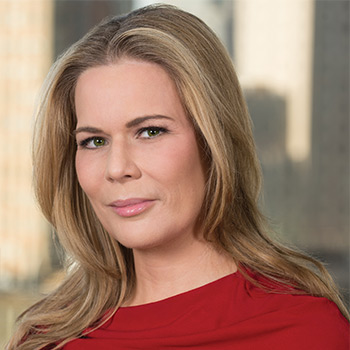The beauty of dividend growth lies in the fact that, unlike sales or profit growth, companies can control the pace. The problem with dividend growth lies in the same fact, suggests Richard Moroney, editor of Dow Theory Forecasts.
Over the last 20 years, the S&P 500 Index has posted annualized divided growth of 6.5%, only slightly below annualized per-share-profit growth of 6.8%. However, profit growth bounced around much more along the way.
Year-over-year growth in 12-month profits had a standard deviation of 24% over the last 20 years, more than double the 9% standard deviation of dividend growth. Standard deviation, a common gauge of volatility, measures how widely a data set deviates from the average.
Credit dividends’ low volatility to the tendency of companies that grow their payouts to keep those dividends expanding despite business conditions. After all, once investors begin to expect annual increases, management would rather not risk disappointing them, for fear of driving those investors away. We at the Forecasts have long favored dividend growers for several reasons, including:
- Consistent dividend growth implies a desire on the part of management to share cash with shareholders.
- Dividend hikes also signal that a company has the financial strength to keep paying out. In contrast, companies that hold their dividends steady or cut them risk alienating investors or eroding their confidence.
- We can’t overlook the income return.
Not surprisingly, most of the dividend-paying stocks we recommend have a history of dividend growth. In the following paragraphs, we briefly review our 10 top income selections, chosen mostly because of their robust dividend-growth history and wherewithal to keep that payout rising. All of these stocks are rated as long-term buys.
Apple (AAPL) started paying dividends nearly a decade ago. Since then, the company has paid out an astounding $117 billion. Its payout has expanded at an annualized rate of 8% over the last three years, a rate the company can comfortably continue, given that the dividend gobbles up only about 15% of profits.
Apple’s dividend seems even more impressive when you realize it comes on top of nearly half a trillion dollars spent on buybacks.
From fiscal 2014 ending October through fiscal 2017, Applied Materials (AMAT) held its divided steady. Since then, the payout has more than doubled. The semiconductor-equipment giant yields just 0.6% and pays out about 12% of its profits in dividends.
We don’t expect Applied Materials to transform into a high-yield stock, but it looks like a good bet to keep the payout rising at a double-digit rate over the next few years.
The consensus calls for profit growth of 19% in fiscal 2022 ending October and 7% in fiscal 2023, reflecting a slowdown from post-pandemic growth rates but continued strong demand as chipmakers attempt to satisfy product shortfalls by expanding capacity.
Nobody would buy Danaher (DHR) for its 0.3% yield alone. Think of Danaher’s dividend growth (25% annually over the last decade) as an extra kicker for this growth stock; with a payout ratio of less than 10%, the company can certainly keep the dividend rising.
We appreciate the life-sciences firm’s robust and consistent operating momentum. Over the last three years, sales rose at a 13% annual rate, while per-share profits (29%) and operating cash flow (32%) grew even faster.
Analysts currently project profit growth of no more than 4% in each of the next two years. However, profit estimates are on the rise, and we see upside to the consensus, helped by the global resurgence in Covid cases.
J.P. Morgan Chase (JPM) has grown its dividend at annualized rates of 14% over the last three years and 17% over the last 10, most recently an 11% hike in September. The stock’s yield of 2.5% ranks it among the most generous payers on our recommended lists, yet we still see room for further growth, as the indicated year-ahead payout of $4.00 per share accounts for just 34% of estimated year-ahead earnings.
Analysts target a 20% decline in per-share profits next year — not unexpected after growth of more than 75% in 2021. However, J.P. Morgan has topped the profit consensus by at least 15% in each of the last five quarters, suggesting analysts have trouble gauging the company’s earnings power. J.P. Morgan is a Buy and a Long-Term Buy.
Since initiating a dividend in 2014, Lam Research (LRCX) has raised the payout every year. Over the last seven years, per-share dividends expanded at an annualized rate of 47%, versus 34% for profits.
Yet despite the aggressive growth, Lam’s payout accounts for less than one-fifth of year-ahead earnings, and we expect the increases to continue in coming years, supported by a combination of consistent operating momentum and improving profit margins. Analysts target profit growth of 26% in fiscal 2022 ending June and 7% in fiscal 2023.
Investors with some seasoning may remember when Microsoft (MSFT) declared its first dividend, back in 2003. Microsoft, one of the first software developers to initiate a dividend, blazed a trail at a time when many investors and executives believed growth stocks didn’t pay dividends.
Since holding the payout flat for seven quarters in 2009 and 2010, Microsoft has raised the dividend at least 7% every year, most recently an 11% boost in September.
NetApp (NTAP) has a dividend history that dates back only to fiscal 2014 ended April — shorter than most of the stocks in the table below. The company doubled its payout in fiscal 2019, accounting for much of the three-year annualized growth of 18%.
After the 100% hike, NetApp followed up with a 20% boost the next year, then held the payout steady for eight consecutive quarters. Unlike most of the other stocks featured in this story, NetApp doesn’t have a history of consistency regarding dividends.
However, given the at-times-aggressive growth and the stock’s yield of 2.2%, high for the technology sector, NetApp seems committed to a robust payout, if not necessarily a smooth ride.
Synovus Financial (SNV) yields 2.8%, good for second-highest among our recommended stocks. The per-share dividend has expanded at an annualized rate of 17% over the last decade, and the company generates sufficient profits and cash flow to keep the dividend rising. Synovus’ year-ahead indicated dividend of $1.32 accounts for less than one-third of projected profit.
Earlier this month, Synovus provided optimistic commentary on loans, projecting full-year growth at or above the top of its previous 2% to 4% range. At 11 times projected 2022 earnings, Synovus trades 15% below the median for regional banks.
After five years of a flat payout, Thermo Fisher Scientific (TMO) raised its dividend 13% in 2018, then followed up with double-digit increases every year thereafter, most recently an 18% hike early this year. The company pays out just 5% of its profits in dividends, providing plenty of flexibility for future increases.
Like many firms that increased profits aggressively during the pandemic bounce-back, Thermo Fisher is expected to post a profit decline next year, then solid growth in 2023. However, given the company’s eight consecutive quarters of exceeding both sales and profit estimates, analysts may be underselling future growth.
UnitedHealth Group (UNH) managed annualized dividend growth of 18% over the last three years and 25% over the last 10, despite sharing the cash flow with consistent stock buybacks. During the last decade, UnitedHealth paid out $20.7 billion while investing more than $14 billion in its own shares.
The current indicated year-ahead dividend of $5.80 equates to 28% of expected earnings, in line with the average payout ratio for the last seven years. Given the consistency of the payout ratio, we expect dividends to grow at a rate similar to profits, which analysts project will rise at an annualized rate of 15% over the next five years.


















